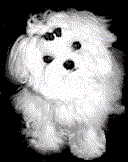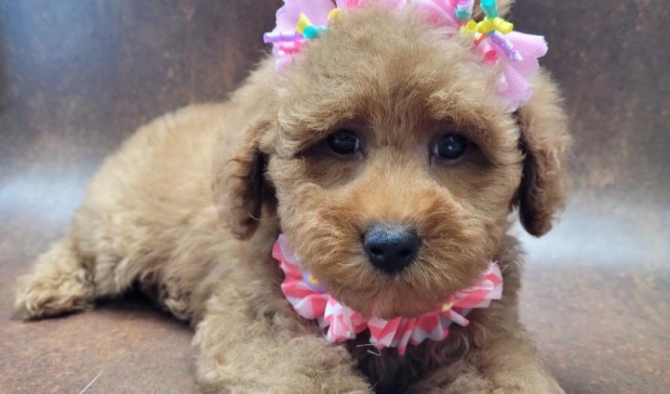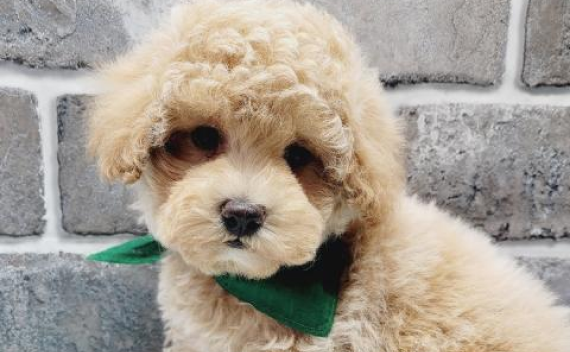

- Phone
- Email puppypetite@aol.com
-
Address
8002 17th Ave, Brooklyn NY 11214

How To Crate Train A Poodle Puppy
The Poodle, an epitome of elegance and sophistication, has been a popular breed throughout history. Known for its distinctive curly coat and proud bearing, this breed, available in Standard, Miniature, and Toy sizes, offers much more than just good looks.
The Poodle's coat is a unique feature, hypoallergenic, and comes in various colors, including white, black, apricot, and grey. Poodles are intelligent and trainable, making them exceptional in various dog sports and tasks ranging from hunting to circus performance. Their playful and friendly demeanor makes them great family pets, while their sensitivity and alertness make them excellent service dogs. Poodles also have a lifespan of 10 to 18 years, which is relatively long for dogs.
The Poodle's beauty, intelligence, and adaptability make it a much-loved breed worldwide. Whether you're looking for a loyal family pet, a keen hunting companion, or an agile performer, the Poodle is a breed that can truly do it all.


Why Is Crate Training Important for Poodle Puppies?
Crate training plays an essential role in the development of Poodle puppies and is beneficial for myriad reasons. It's a method that not only ensures the safety of your beloved pet but also aids in its grooming, training, and overall well-being.
Crate training provides a safe haven for your Poodle puppy, offering them a comfortable space to relax and sleep. It also plays a crucial role in housebreaking, as puppies naturally avoid soiling their sleeping areas. This means crate training can expedite the process of housebreaking and ensure fewer accidents around the home. Furthermore, crates can help minimize destructive behaviors, such as chewing on furniture, as it restricts your puppy's access when unsupervised.
Crates also aid in transporting your Poodle puppy safely, especially during car rides or vet visits. It gives them a familiar space, reducing their anxiety during such trips. Additionally, crate training can make it easier for your dog to adjust if it needs to be boarded or hospitalized, as it will be accustomed to confinement.
In conclusion, crate training is an essential tool for your Poodle puppy's development, enhancing their sense of security, aiding in housebreaking and behavior management, and easing travel. It's a process that requires patience and consistency, but the payoff in terms of your pet's well-being and your peace of mind is well worth the effort.
The Process on Crate Training a Poodle Puppy
Crate training is an important aspect of raising a Poodle puppy. It helps with housebreaking, provides a safe space, and can prevent destructive behaviors. Here's a guide on how to crate train a Poodle puppy:
Choose the Right Crate
First and foremost, selecting the appropriate crate is essential. The crate should be comfortable and large enough for your Poodle puppy to stand, turn around, and lie down. However, it shouldn't be so spacious that they can soil one end and sleep at the other. If you plan to use the same crate as your puppy grows into an adult Poodle, consider purchasing a crate with dividers. This allows you to adjust the space within the crate as your puppy grows, ensuring it remains the appropriate size. The crate should also have good ventilation and be easy to clean. Remember, the goal is to make the crate a comfortable, safe space for your puppy, so it's worth investing in a crate that will serve your Poodle well.
Introduce the Crate Gradually
Introducing the crate to your Poodle puppy should be a gradual process, ensuring that the experience is positive and not stressful. Start by placing the crate in a common area where your puppy spends a lot of time. Leave the door of the crate open and let your puppy explore it at their own pace. You can encourage exploration by placing their favorite toys or treats inside.
Initially, your puppy might be wary of the crate, which is completely normal. Don't force your puppy to enter the crate right away. Patience is key during this process. Your goal is to make your puppy realize that the crate is a safe and pleasant place. Over time, start feeding your puppy their meals near the crate, gradually moving the food dish inside. Once your puppy is comfortable eating inside the crate, you can begin closing the door while they eat and opening it once they're done.
Gradually, increase the length of time the door is closed after meals. If your puppy shows signs of distress, reduce the time and slowly build it up again. Remember, the aim is to create a positive association with the crate.
Create Positive Associations
Creating positive associations with the crate is paramount in successful crate training. It's crucial for your Poodle puppy to associate the crate with pleasant experiences. There are numerous ways to do this. Treats are usually a reliable way to create a positive link. Each time your puppy goes into the crate, reward them with a treat. Ideally, give them a special treat they only receive when they're in the crate, so they look forward to their crate time.
Toys can also create positive associations. Consider toys that are interactive or ones that can be filled with food. These can provide mental stimulation for your puppy and keep them occupied while in the crate.
Another way to make the crate more inviting is to make it comfortable. Adding soft bedding, blankets or even an old t-shirt with your scent can help your puppy feel more secure and relaxed.
Lastly, try incorporating the crate into playtime and training sessions. This helps your puppy realize that the crate can be a fun place too. Remember, the goal is to make your puppy see the crate as their own special place where good things happen. Building these positive associations takes time, patience, and consistency, but it's a crucial step in successful crate training.

Feeding in the Crate
Feeding your Poodle puppy in the crate can be an incredibly effective way of reinforcing positive associations with the crate. Start by placing the dish near the crate entrance. If your puppy shows comfort and ease at this stage, you can gradually move the dish further into the crate. Eventually, place the food dish at the back of the crate, so your puppy has to fully enter to eat. Feeding meals in the crate creates a strong association between the crate and something enjoyable, helping your puppy embrace the crate as a positive place.
When your puppy is comfortable eating in the crate with the door open, you can gradually start to shut the door. Initially, open the door as soon as the meal is finished. Over time, leave the door closed for a few extra minutes after the meal is finished, gradually extending this period. If your puppy begins to whine or show signs of stress, you may be progressing too rapidly. It's important not to rush this process; slow and steady is the key to making your Poodle puppy comfortable with the crate.
Gradual Enclosures
Gradual enclosures is an essential part of crate training. It's critical to ensure that your Poodle puppy feels safe and not trapped within the crate. Once your puppy is comfortable eating in the crate with the door closed, you can start incorporating short periods of confinement. This process helps your puppy get used to being in the crate while you're at home, making it less stressful when you need to leave the house.
Start with short periods of about 5-10 minutes and gradually increase the time as your puppy becomes more comfortable. You can use a word or phrase like "crate time," followed by a treat to indicate it's time to go in the crate. It's important to remain calm and composed during this process, as pets can pick up on our emotions.
Ensure that your puppy has toys or chew items in the crate to keep them occupied. Initially, stay in the room with your puppy. Over time, you can start leaving the room for short periods. If your puppy whines or protests, wait until they settle down before letting them out. This ensures they do not associate whining with being let out of the crate.
Bedding and Comfort Items
Just as humans enjoy a comfortable bed, so do puppies. The right bedding can make the crate a more inviting place for your Poodle puppy. A soft bed, blanket, or even a plush towel could offer comfort. However, keep an eye on your puppy to ensure they don't chew on their bedding; if they do, it might be safer to remove it until they grow out of their chewing phase.
Comfort items can also help in fostering positive crate experiences. Familiar items can provide a sense of security and help soothe your puppy when you're not around. Think about including a safe chew toy or a durable stuffed animal in the crate. Additionally, an old t-shirt that smells like you can provide reassurance and comfort to your puppy in their crate.
Frequent Bathroom Breaks
Frequent bathroom breaks are an essential part of crate training, particularly for young puppies. Due to their small size and developing bodies, puppies are unable to hold their bladder for extended periods. As a rule of thumb, a puppy can typically hold their bladder for their age in months plus one. For instance, a two-month-old puppy can hold their bladder for approximately three hours.
To ensure your puppy's comfort and well-being, schedule regular bathroom breaks. Let your puppy out of the crate every couple of hours for bathroom breaks and immediately after they wake up from a nap. Always praise your puppy or give them a small treat when they do their business outside. This not only reinforces positive associations with the crate but also aids in house training.
Be Patient and Consistent
Crate training is a process that requires both patience and consistency from the pet owner. Remember, this is a new experience for your Poodle puppy and it may take them some time to become comfortable with their crate. It's essential to create a positive and consistent routine around crate use. Try to avoid changing the location of the crate frequently and maintain a regular schedule for crate time, feeding, and bathroom breaks. Be patient and understanding of your puppy's progress. If they seem to be struggling with the training, it might be necessary to slow down a bit and allow them more time to adjust. It's also important not to use the crate as a form of punishment. This could lead to your puppy associating the crate with negative experiences, making the training process more difficult. With consistent positive reinforcement and patient, gradual training, your Poodle puppy can learn to see their crate as a safe and enjoyable space.
Crate training a Poodle puppy is a gentle, gradual process that, when done correctly, can result in a positive and safe space for your pet. It provides a structured environment that aids not only in house training, but also in developing a consistent and comfortable routine for your puppy. The crate can become your puppy's personal haven, offering a sense of security and serenity.
